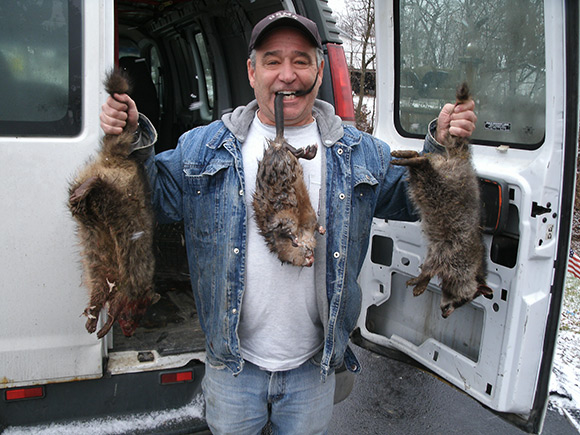 Team Fur News - Oct23
Team Fur News - Oct23
Tatohkala
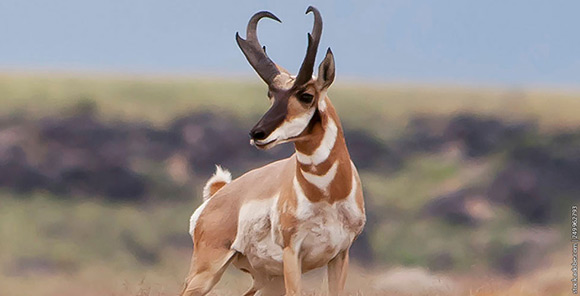
Pronghorn. Photo: California Department of Fish and Wildlife
Tatohkala it is the Lakota word for a pronghorn antelope, specifically a buck. Does are ikpisanla. These are the words I choose to call my favorite big game animal, especially when I am hunting them, to honor them, to respect them in the way that the Lakota did and do.
I love everything about this most unique big game animal.
I love how they appear as bright blobs of white and orange that literally “pop” in a visual sense, way out yonder across the prairie when the sun hits them. There is no mistaking this sight. If they’re there, you’ll see them. But approach them in the wrong way – their big black eyes with a 320 degree field of vision are capable of 8X binocular vision – and all you’ll see is a streak of orange and white flowing across the landscape like a flooding river until they disappear into the far horizon.
Biologists believe many of their attributes are the products of predation. During the Pleistocene epoch (think wooly mammoths, 2.5 million to nearly 12,000 years ago) American cheetahs were their primary predators. As a result, tatohkala and ikpisnala evolved into the fastest land animals in the Western hemisphere, capable of running at 55 mph for half a mile. That means tatohkala could almost loop racehorse Secretariat, running at his top speed of nearly 38 mph, twice on the Kentucky Derby’s 1-1/4 mile track. He could also run at Secretariat’s speed for about 4 miles without breathing hard. He and the does evolved huge hearts and run with their mouths open to inhale as much air as possible for speed and endurance.
Distance is how tatohkala and ikpisnala protect themselves. They put distance between themselves and danger, using four spindly hoofed legs as rocket propulsion to literally float over the land. Try to cover the same distance on foot and what took tatohkala moments will take you hours.
Their nemesis is fencing, especially sheep fencing. Deer and elk leap fences unfazed. Faced with jumping a fence or crawling under, through or around it, tatohkala will choose the latter. Those spindly legs are made for running, not jumping. They can easily break a leg – certain death – if forced to jump. Some will, to survive, but they’d rather go through or around.
I love observing a herd through a riflescope.
They stop to feed, chewing on forbs, cactus or sagebrush, then move, always moving, always flowing across the landscape. As with deer and elk, the does are the vanguard. One old girl keeps watch while the others – usually one dominant herd buck and some stubby-horned youngsters – feed. Then another doe takes her place, in a constantly revolving flow of feeding and alertness.
There is often a subsidiary buck or two on the fringes of the herd, watching, waiting. They were pushed there by the patriarch during late August and September’s breeding season. The patriarch will herd his harem of does closely, running off interlopers. Come May or June those does will drop his offspring – maybe twins, maybe not – and protect the youngsters from coyotes and other predators until they too, become part of the herd.
I love the places they live.
Big, wide, empty places; places in the West; broken places with lots of sagebrush and cactus, their principal autumn and winter food – so long as a good hayfield isn’t nearby. Alfalfa sprouts after the hay is cut, and that’s hard to resist when they know winter snows will cover their domain, sometimes too deep to reach food. Bad winters can decimate herds, which makes them even more precious on the landscape.
Evolutionarily, they are closer to giraffes than deer or elk. They’re definitely not like Africa’s antelope, not even the same family. They were misnamed because the closest creatures Europeans could compare them to were Africa’s antelope. But they are unique to North America. Blame Merriweather Lewis and William Clark, roaming the Louisiana Purchase at the behest of President Thomas Jefferson at the turn of the 19th century, for this. After “discovering” and naming several species of sharptails, Lewis and Clark stumbled upon tatohkala and Ikpisnala in Nebraska’s Niobrara River country. Too bad they didn’t have a Lakota guide for proper names.
I love tatohkala’s black chin strap, nose and forehead, all marks of a buck.
His horns – not antlers – arise from flat bones protruding from his skull. Ikpisnala can also wear stubby horns, but the chin strap is the hallmark of a buck. Those horns, including the curved prong which lent tatohkala his other name, are covered in a keratinous (think fingernails or hooves) sheath. This is shed and regrown annually, but the bone core remains. Hold the horns of a downed tatohkala in your hands and you’ll sense something magical about this animal.
I like the odor of tatohkala. It’s a musky, rutting scent, like a buck deer or bull elk. He uses this scent to mark his territory, rubbing preorbital glands near the eye on sagebrush to say, “This is mine.” I smell sage, distance, sky and Earth power in this scent.
Some disdain tatohkala for his odor, claiming he’ll taste like sage and rut. I’ve talked to ranchers who, during hard times, ate many antelope but sold their beef cattle. They generally dislike eating tatohkala or ikpisnala. It’s my favorite game meal because it’s super lean, clean, lovely red meat, if properly cared for. I suspect those who ate “bad” tatohkala did so after tossing their buck, gutted, in the back of a pickup to ride around for three days in 75 degrees. Mine become steaks, chops, stir fry and stew meat as soon as possible after harvest.
Being honest, I’d have to say I love hunting tatohkala or ikpisnala best. I’m strictly spot-and-stalk. Some hunters drive backroads in a pickup all day, only leaving the truck to shoot. Unscrupulous outfitters or outdoor TV “stars” tout this kind of “speed goat” hunt, no pain, all gain.
Not me. I start before dawn, climb a ridge or other high place, and glass the terrain until I find a herd or buck I want to stalk, then make my move. The country is open, often fairly flat, so I use any terrain feature – a gully, hills, sagebrush, tall grass, anything – to shield my movement from those big black eyes. Then I’ll hike, crouch-walk, then do what Mark Kayser branded the “Wyoming crawl” (literally crawling), even slither like a snake or sniper to get close enough for the shot. My personal range limit is 300 yards. I’ve taken tatohkala at 353 yards, but I prefer closer.
This isn’t usually easy, especially keeping up with a roving herd while crawling. The first time I hunted tatohkala in Butte County, South Dakota, on an early October opener in 2007, it got seriously cold, with some snow that melted and muddied the shortgrass, section-sized, range cattle pastures where tatohkala lived.
I was shooting my Pennsylvania deer rifle, a Smith & Wesson Model 1500 7mm magnum – the old scope was going bad, something I was unaware of – then. Three times, I stalked herds aiming for bucks. I literally crawled and slithered through muddy, cow-pied, cactus-laden pastures to get within what I thought was proper range (no rangefinder). I shot to no avail.
On one stalk, the cartridges on my leather cartridge belt pouch were so muddy they wouldn’t go down the spout after I fired (wasted, actually) the first four.
By days end I was wet, cold, mud-slathered, pulling cactus spines from my knees and hands and frustrated. Yet when I called Nancy that evening to tell her how things were going, I was excited.
“This is great, I love it!” I told her. She thought me crazy and laughed.
Things haven’t changed much. Nowadays, I draw tatohkala tags whenever I can, shoot a Winchester Model 70 .25-06, wear knee pads and gloves against the cactus thorns, have a rangefinder and much more Wyoming crawl experience. And I still love it. I'd take spot-and-stalk tatohkala hunting over any other big game.
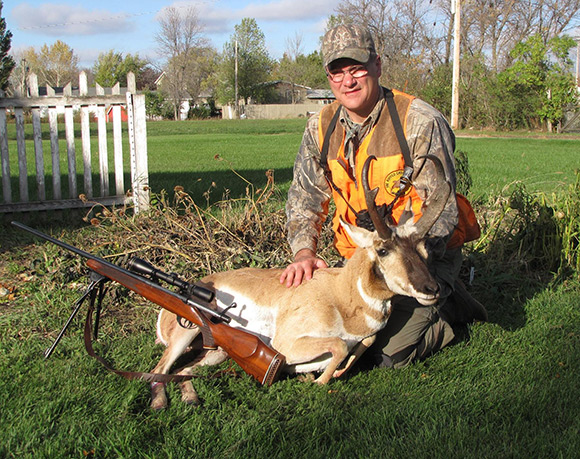
John Taylor with a Tatohkala.
Very Active Bears
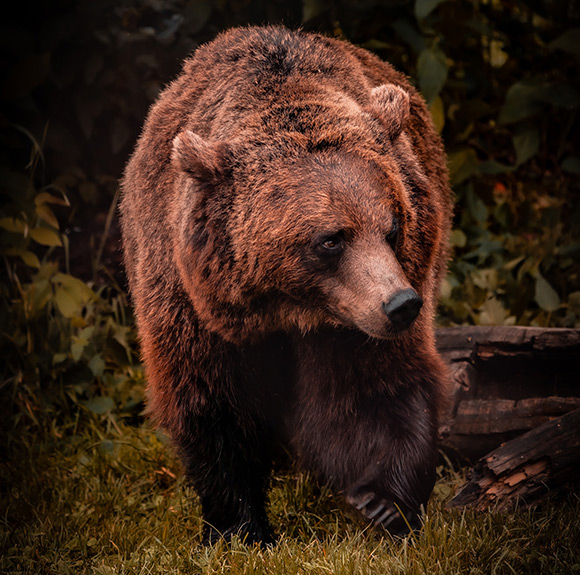
Several recent grizzly bear encounters in Montana have resulted in injuries
and a death. Photo: Daniel Diesenreither/Unsplash
Maybe Montana’s bears listened to Gov. Greg Gianforte, when he proclaimed September as Bear Aware month; maybe they were just itching to cut loose after hibernation. Either way, the state’s grizzlies and black bears have been very active, grizzlies ranging further east and both bears creating human-bear conflicts. It began in July, when Fish, Wildlife & Parks (FWP) confirmed grizzly bear sightings in several places where grizzlies were not known – in some cases for more than a century. This included the North Hills and Grizzly Gulch areas near Helena; the Elkhorn Mountains near Clancy; near Ulm, in the Pryor Mountains southeast of Billings; the Shields Valley, Little Belt Mountains, near the Judith River east of Denton; and on the lower Dearborn River Grizzlies were known to be in four major Montana ecosystems:
• Greater Yellowstone, which includes southwestern Montana, where bear numbers increased from an estimated 200 bears in 1980 to 1,000 bears (some say more) by recent counts.
• Northern Continental Divide, in northwestern Montana, where grizzly numbers jumped from 400 bears in 1975 to 1,100 bears recently.
• Cabinet-Yaak in northwestern Montana, with 55 known bears.
• Bitterroot, in western Montana, where grizzly numbers are uncounted.
The U.S. Fish and Wildlife Service (FWS), the U.S. Forest Service, Bureau of Land Management, National Park Service, FWP and bear conservation groups tout the increase in grizzly numbers as a major conservation success story – particularly in Yellowstone and the Northern Continental Divide systems, where bear numbers have met established population goals. And it is.
Currently, FWP says, there are grizzlies in all of Montana west of Billings, essentially the western two thirds of the state. Grizzlies remain listed as threatened under the Endangered Species Act. However, grizzlies, black bears and people have been bumping into one another all over Montana with negative results for both since July. On July 24, a woman hiking on Buttermilk Trail near West Yellowstone was killed by an adult grizzly with at least one cub. The Custer-Gallatin National Forest closed the area as a safety precaution for a time. In early September, near West Yellowstone, a grizzly with a cub broke through a window and went into an occupied home to eat dog food. The homeowner reported the bear. Later that evening, FWP and local law enforcement captured the cub. With authorization from FWS, FWP shot the adult grizzly “due to an immediate public safety threat from the bear’s food-conditioned behavior.”
The adult was a 10-year-old female captured in 2017 for research. Through DNA and other identification, this bear was confirmed to be the killer of the hiker. The same bear was also involved in a 2020 Idaho encounter that injured a person near Henrys Lake State Park. Efforts to catch the bear then were unsuccessful. Both incidents were deemed “defensive responses.” The 46-pound male cub was transferred a zoo. Later in July, in Red Lodge, several people-habituated and food-conditioned bears were getting into trouble. One yearling black bear, for example, got into two vehicles, entered a home and two garages, stole a backpack and approached people – all unnatural bear behavior. As a result, FWP intended to trap and euthanize this bear because its food-conditioned behavior was a threat to people.
In early August, a 3- to 5-year-old female grizzly without cubs, in Big Sky (near West Yellowstone), was captured and euthanized after repeatedly getting into unsecured “bear-resistant” containers and breaking into vehicles to get food. Attempts to haze the bear with electric fencing were unsuccessful. On September 8, in the Yellow Mule area of the Madison Range (near Big Sky), a grizzly attacked and seriously injured a man. During this encounter, one of the victim’s companions fired a pistol at the bear. FWP grizzly specialists, game wardens and Gallatin County Sheriff’s Office deputies searched the attack site but found no sign the bear was hit. However, they did find much evidence of bear activity, including a cached animal carcass, whitebark pine middens and bear scat. This, they concluded, indicated a defensive attack in a surprise close encounter with the victim. More recently, on September 12, a hunter shot and injured a grizzly near Fairfield, near Great Falls in northcentral Montana. The hunter was walking along a shelterbelt, hunting for upland birds, on private land, when he was charged by the grizzly. The hunter fired his shotgun twice at less than 15 feet, hitting the bear at least once and causing it to run off. FWP says evidence at the scene indicates the bear was an adult male. FWP and law enforcement searched more than four square miles looking for the bear, which was wounded, but couldn’t find it. They believe the bear is hiding nearby in thick cover or near abandoned buildings and urged hunters to be extra cautious.
FWP’s bear specialists and other organizations remind everyone visiting or living in Montana that avoiding bear conflicts is easier than dealing with them. They urge everyone to:
• Keep garbage, bird feeders, pet food and other attractants secured in a building or certified bear-resistant container, especially garbage.
• Never feed wildlife, including bears. It’s illegal to do so and bears that become food conditioned pose threats to people.
• Carry bear spray and be prepared to use it immediately.
• Travel in groups whenever possible and make noise, which can help alert bears to your presence.
• Stay away from animal carcasses, which often attract bears.
• If you encounter a bear, never approach it. Leave the area when it is safe to do so.
For more information, visit https://fwp.mt.gov/conservation/wildlife-management/bear/be-bear-aware.
Vermont Bear Activity Raises Concerns
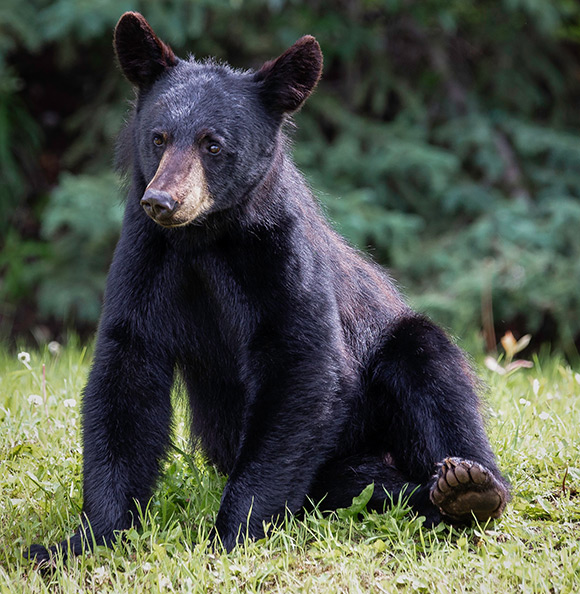
Black bears are getting into urban areas in Vermont. Photo: Pete Nuij/Unsplash
West Virginia Ginseng Season Open

West Virginia’s ginseng harvesting season is open, under careful regulations. Photo: WVNDR
West Virginia’s 2023 ginseng harvest season opened September 1 and will continue through November 30. Observing the legal season and regulations help preserve Appalachia’s threatened and endangered wild ginseng, the state’s forestry division notes. Before the plant can be legally harvested, ginseng must be at least five years old and its seed-bearing berries bright red. The slow-growing plant needs at least five years to mature and reproduce. The plant's age can be determined by looking at the base of the plant stem, where bud scars occur. A five-year-old ginseng root will have at least four scars. No ginseng may be taken from state forests, state parks or other state-owned land and harvesters must have written permission to dig on private property. Harvesting pulls up the ginseng root, ending the plant’s ability to replace itself with new generations. To help the herb’s seeds grow, the hunter must, by law, plant them at the site where the root was taken. Currently, West Virginia’s national forests still allow ginseng hunters to dig on designated national forest lands with a current U.S Forest Service permit. Hunters should contact the national forest office in their area regarding ginseng permits and regulations. Other national forests’ have found ginseng populations too depleted to permit harvesting. For example, no permits will be issued for North Carolina’s Nantahala and Pisgah National Forests and the Cherokee National Forest. The herb’s decline is attributed to poaching, overharvesting and harvesting without planting seeds to produce a new crop. Harvesters have until March 31, 2024, to sell their ginseng to a registered West Virginia ginseng dealer or to have roots weight-receipted at one of the West Virginia Division of Forestry weigh stations. Regulations prohibit possession of ginseng roots from April 1 through Aug. 31 without a weight receipt. The receipt is a record of the ginseng harvested during the current year and the individual who wants to hold it over to the next season. The law requires all harvesters to provide a government-issued photo identification to sell ginseng to a registered dealer. Fines range from $500 up to $1,000 for a first offense and $1,000 up to $2,000 for multiple offenses. Details on ginseng season are on the Division of Forestry website, https://wvforestry.com/ginseng-program/.
Fall Waterfowl Flights: Mixed Results
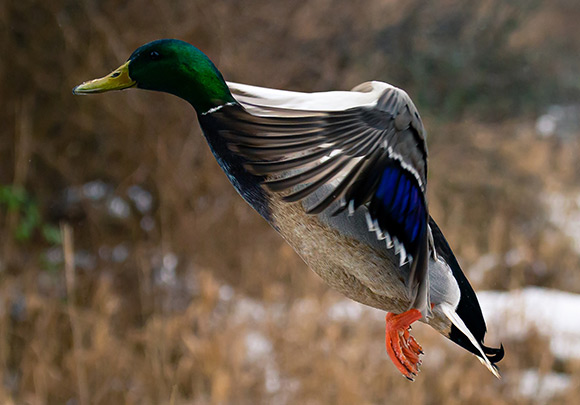
Mallard numbers are down, but pintails, canvasbacks, redheads and other
duck numbers are up. Photo: Pete Nuij/Unsplash
Depending on where and what you hunt, fall waterfowl numbers might be pretty good or not as good as last year. The U.S. Fish and Wildlife Service (FWS) released its 2023 Waterfowl Population Status in August. Its numbers are based on surveys conducted in May and early June by FWS, the Canadian Wildlife Service and other partners. FWS says total breeding duck numbers were estimated at 32.3 million, a 7% drop from 2022’s estimate of 34.7 million and 9% below the long-term average (since 1955). Ducks Unlimited (DU) Chief Scientist Dr. Steve Adair said these “somewhat disappointing” numbers reflect the complex relationship between waterfowl, weather and habitat. He’d hoped for better production from the eastern prairies following more moisture. Yet DU says populations of most species remain healthy and near long-term averages, which should produce a respectable fall flight. Key takeaways from the report include the following:
• Pintails numbers, increased 24% over the record 2022 low, were a bright spot.
• Mallard and American wigeon numbers declined: Mallards were down 18% from 2022, 23% long-term; American wigeon were down 14% from 2022, 28% long-term.
• Continuing drought in the western Canadian prairie provinces will limit production for ducks that use that region. Overall, total pond numbers in both the U.S. and Canada were estimated at 5 million, 9% lower than 2022’s 5.5 million and slightly below the long-term average of 5.2 million.
• DU doesn’t expect a significant impact on duck populations from the Highly Pathogenic Avian Influenza outbreak of 2022.
Meanwhile, in North Dakota, duck brood numbers jumped nearly 80 percent and the state’s Game and Fish Department (NGFD) biologists expect a fall flight of ducks similar to 1998, 2004 and 2020 – or about 23% more birds that last year’s fall flight. This good news comes from NFGD’s annual mid-July duck production survey. Mike Szymanski, migratory game bird management supervisor, said a survey conducted in May indicated the 2023 duck index was the 23rd highest on record – up 1.5% from 2022, and exceeding the 1948-2022 average index by 39%. Szymanski attributed the increase to water – following a dry summer and fall in 2022, a snowy winter helped wetlands rebound going into spring breeding season. By July’s brood survey, this improved habitat showed results. Brood numbers were up 79% from 2022, 88% above the 1965-2022 average. Still Szymanski noted a shortage of upland nesting habitat across the state, which impacts puddle ducks. Overwater nesting species like canvasbacks, redheads and ring-necked ducks all set brood records.
Brush Up on Tree Stand Safety
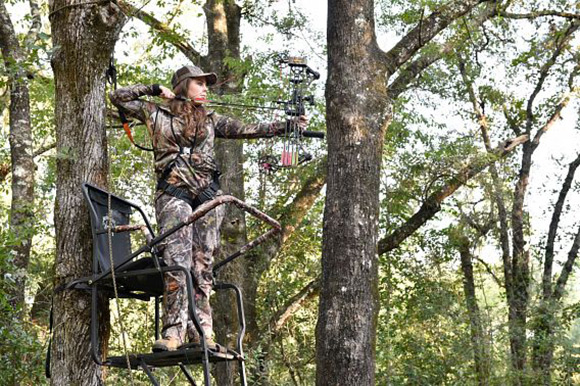
To avoid accidents and ensure a safe outing, always be mindful of the basic rules of tree stand safety before and during every hunt. Photo: Council to Advance Hunting and the Shooting Sports
The Wisconsin Department of Natural Resources (WDNR) reminds hunters to take proper precautions and follow all best safety practices before climbing into a tree stand this fall. Surveys indicate a quarter of Wisconsin bowhunters have experienced a fall or near-fall from an elevated stand in the past. Also, research has shown that risky tree stand climbing behavior becomes more likely to catch up to hunters the longer they hunt. To avoid accidents and ensure a safe outing, always be mindful of the basic rules of tree stand safety before and during every hunt:
• Regardless of the type of tree stand, always wear a full-body harness, also known as a fall-arrest system, that meets current industry standards.
• Inspect your equipment before each use: Inspect your stand for missing components or broken features before climbing. Ensure all lines are intact, the harness fits and has no snags and tears.
• Always select a substantial, solid tree that can support your weight and is free from any dead limbs above.
• Connect the harness to the tether line and keep the tether line short. The tether is designed to keep the wearer in the seat and not catch them after falling.
• Always keep three points of contact while climbing into and out of the tree stand. This means always keeping two hands and one foot or two feet and one hand in contact with the stand or ground.
• Always use a haul line to raise and lower unloaded firearms or a bow into and out of the stand.
• Use a lifeline when climbing up and down to keep wearers connected from when they leave the ground to when they get back down.
• Before heading out, tell someone where you'll be hunting and when you expect to return.
• Carry a cell phone to call for help if anyone becomes injured after a fall.
Hunters can participate in the Tree Stand Manufacturers Association Safety Course (https://www.huntercourse.com/treestandsafety/). The free and interactive course takes just 15 minutes yet contains information that could save your life.
Efforts Intensify to Help Botulism-Affected Birds at Tulare Lake
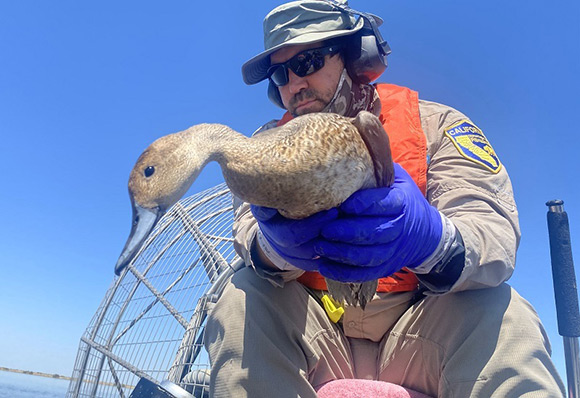
Thanks to an unusually snowy winter and wet spring, Tulare Lake waterfowl, like this hen pintail, have been hit with avian botulism. Wildlife officials and others are joining to help the birds. Photo: CDFW
The California Department of Fish and Wildlife (CDFW), joined by state, federal and non-governmental organizations, has intensified its response to help birds affected by Type C avian botulism at Tulare Lake. Avian botulism is caused by a toxin-producing bacteria that occurs naturally in bodies of water like Tulare Lake. Tulare Lake, once the largest freshwater lake west of the Mississippi River, reemerged from the pastures and agricultural fields of the southern San Joaquin Valley this year because of California’s extraordinarily wet winter and spring. The lake is attracting water birds of all sorts, and is expected to draw millions of waterfowl, shorebirds and other bird species as fall migrations get underway. CDFW crews are patrolling the lake daily using airboats to help collect affected birds and monitoring for dead birds. The overall number of birds being collected has increased each week. In August more than 1,600 birds were collected. By early September, responders collected 530 additional birds and the daily average jumped to 50 to 100 birds recovered. Oiled Wildlife Care Network (OWCN), a program of the UC Davis School of Veterinary Medicine, is providing emergency veterinary care for the birds in a temporary facility at the Kern National Wildlife Refuge. This facility will be able to care for up to 250 avian botulism-affected birds at a time. Veterinarians and wildlife rehabilitators from UC Davis and OWCN’s 45 member organizations throughout the state will care for the birds. Avian botulism type C outbreaks in wild birds are typically not associated with human botulism.
Turtle Trafficking Suspect Indicted for Wildlife Officer Assault
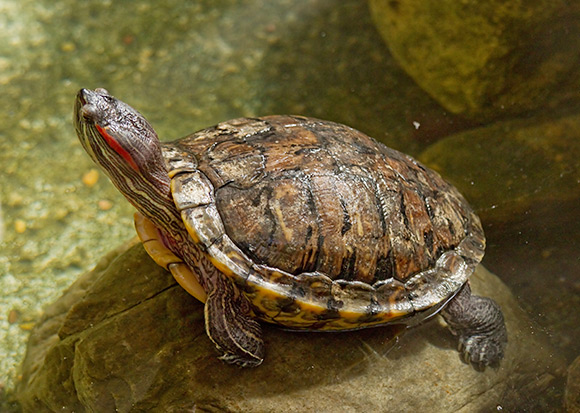
Ohio wildlife officers seized more than 100 red-eared sliders being
sold illegally in Cincinnati. (Greg Hume photo)
An individual suspected of trafficking red-eared slider turtles in Cincinnati and striking a state wildlife officer with his vehicle was recently indicted in Hamilton County by a grand jury, according to Ohio’s Department of Natural Resources (ODNR) Division of Wildlife. In July, State Wildlife Officer Brad Turner, assigned to Preble County, received a Turn-In-a-Poacher (TIP) report regarding turtles being sold in Cincinnati. Turner and Wildlife Officer Andrew Dowdell, assigned to Butler County, responded to the location. They found two men selling red-eared sliders without the required propagation permit. During the encounter, one of the suspects, Alonso Oliver-Tucker, 37, of Philadelphia, Pennsylvania, disobeyed an officer’s verbal commands and fled in his vehicle, striking Turner as he accelerated. Turner was treated at The Christ Hospital and released the same evening. The Cincinnati Police Department filed three arrest warrants for Oliver-Tucker, who was arrested several days later in Pennsylvania. The suspect was recently indicted by a grand jury in Hamilton County on two felony counts: assault on a police officer and failure to comply with an order of a police officer. The wildlife officers seized more than 100 red-eared sliders. An investigation into wildlife violations for both suspects is pending. Potential wildlife violations include failure to obtain a propagation permit, failure to keep record of sales, failure to attach Passive Integrated Transponder (PIT) tags to turtles used in commercial sale, and deterrence of a wildlife officer. Anyone can report a wildlife violation through the Turn-In-A-Poacher (TIP) program. Wildlife violations can be reported anonymously by calling 800-POACHER (762-2437).
Missouri Dept. of Conservation Wants Fall Turkey Feathers
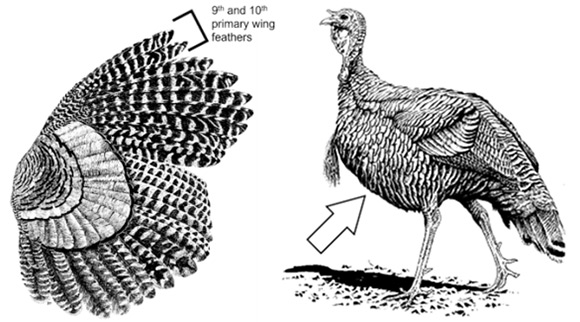
Missouri Department of Conservation is asking fall turkey hunters to share wing and breast feathers from the birds they harvest. Photo: MDC images
The Missouri Department of Conservation (MDC) is asking Missouri turkey hunters to save and share feathers from the wild turkeys they harvest this fall. Hunters who harvest a turkey during the archery season (Sept. 15 - Nov. 10 and Nov. 22 - Jan. 15, 2024) or the fall firearms season (Oct. 1-31) are asked to mail feathers from their turkeys to MDC using a postage-paid envelope from MDC. The feathers will help MDC scientists improve research models used to monitor turkey population trends and estimate turkey numbers across the state. MDC asks turkey hunters to save the 9th and 10th primary wing feathers and 3-5 breast feathers (see diagrams) from harvested turkeys after Telechecking their birds. For a Feather Submission Form and more information from MDC, visit mdc.mo.gov/hunting-trapping/species/turkey/fall-turkey-feather-submission. Questions? Email the MDC’s Turkey Management Program wildturkey@mdc.mo.gov.
Lake Ogallala Fishery to be Renovated
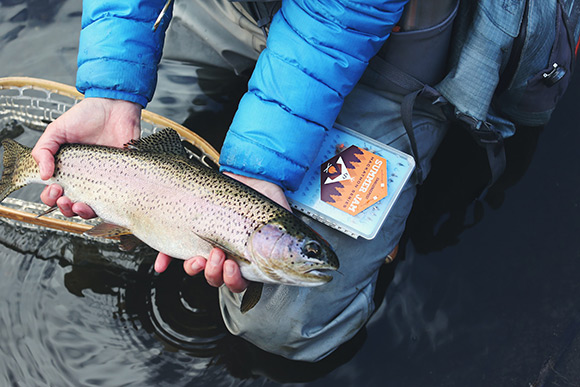
Nebraska’s Lake Ogallala will be renovated this fall then stocked with trout. Photo: Sticker Mule/Unsplash
The Nebraska Game and Parks Commission (NGPC) plans a fall renovation of Lake Ogallala’s fishery. Dean Rosenthal, Game and Parks Fisheries Administrator, expressed the importance of managing the fishery to improve fishing opportunities. Over time, habitat conditions have deteriorated, and the fishery has declined due to an increase in common carp, white sucker, gizzard shad and alewife populations.
Previous renovations in 1969, 1997 and 2009 were followed by rapid improvement in the fishery and angler surveys documented marked increases in fishing participation. In late September, lake water levels will be lowered, and an approved fish toxicant will be applied to eliminate the existing fish population. The East and West campgrounds will be closed from Sept. 22 to Oct. 23. Boat docks and the fishing dock also will be removed. Once the renovation is completed, rainbow trout, tiger trout and yellow perch will be stocked in the fall, followed by additional rainbow trout stocked in 2024. Lake Ogallala's cold-water fishery is unique to Nebraska, facilitated by low-level water releases from Lake McConaughy's Kingsley Dam. Ideal conditions – clear water, abundant aquatic vegetation and thriving invertebrate communities – ensure exceptional growth rates and good fishing for trout. In addition to trout, species like yellow perch, smallmouth bass, and channel catfish have also found success in the lake.
North Dakota CWD Rules
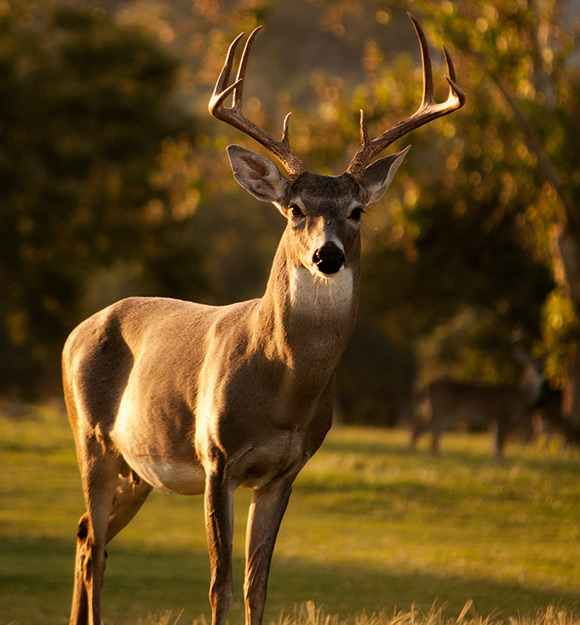
Whitetail Deer Laura College/Unsplash
Big game hunters should note new rules for North Dakota. Noteworthy items include:
• Whole carcasses of animals harvested in North Dakota can remain in the deer unit or may now be transported anywhere in the state. However, carcass waste must be disposed via a landfill or waste management provider. This does not apply to heads dropped at CWD collection sites or lymph nodes submitted for CWD surveillance. Taxidermists and game processors can also accept intact carcasses of animals harvested within North Dakota but assume responsibility for disposal.
• A new management strategy allows baiting restrictions to be removed in a unit if the number of adult deer equivalent to at least 10% of the gun licenses allocated in the unit are tested for CWD within a year, and all the results are negative. If the sampling goal is not met or CWD is confirmed in the unit, baiting restrictions remain.
• No new units have been added to the baiting restriction list for 2023-24. Units 2K1 and 3B2 are scheduled to be added to the restriction list in 2024 due to a positive CWD detection during the 2022 hunting season within 25 miles in an adjacent unit. They will not be added if the 10% goal is reached this year and all CWD test results are negative.
• Hunters are prohibited from transporting into North Dakota the whole carcass or parts, except the lower-risk portions, of deer, elk, moose or other members of the cervid family harvested outside of North Dakota.
• State Game and Fish Department (NDGFD) officials will conduct surveillance of the state by region on a four-year rotation. This year, the CWD surveillance effort will consist of deer gun units in southeastern North Dakota. Outside of this area, hunters can still have their animal tested by taking it to a Game and Fish district office, any deer head collection site (primarily located in the surveillance area) or using a mail-in self-sampling kit. A unit outside the annual surveillance zone is still eligible to have a baiting restriction removed if the sampling goal is met or can be added as a restricted unit if a positive is found. For complete information visit NGFD’s CWD webpage at gf.nd.gov/wildlife/diseases/cwd2023.
Wisconsin Buying Red Pine Seed

A red pinecone. WDNR is looking for buy them. Photo: WDNR
The Wisconsin Department of Natural Resources (DNR) is asking for help collecting red pine seed for their reforestation program. This fall, the DNR’s tree nursery in Boscobel will be sowing the last of the red pine seed they have in storage and are asking members of the public to collect seed to replenish their supply. Red pine (Pinus resinosa) can be found throughout the state, especially the sandy soils of central, northwest and northeast Wisconsin. DNR’s supply of red pine seed has been depleted due to the lack of good cone crops over the past couple of years, said Jeremiah Auer, DNR Forest Regeneration Specialist. Red pine is Wisconsin’s number one conifer for timber production and many red pine plantations are now being harvested as they reach maturity. For sites that will be returned to red pine production, this most likely means planting seedlings for regeneration. So, help in collecting seed now is vital to ensure the future of this valuable timber resource. The prime time to collect the red pinecones is as they turn from green to purplish brown and reddish-brown tips develop. The DNR is seeking red pinecones at that mature stage, when the color has just turned brown but the scales have not yet opened to release the seeds. They are at maturity in southern and central Wisconsin now and are mostly ready for collection in northern Wisconsin. The DNR pays $125 per bushel for properly collected red pine cones. A bushel typically nets about a half of a pound of viable seeds. This means the nursery needs to purchase more than 120 bushels of cones to get enough seed for one year’s worth of red pine seedlings. Collecting cones is a win-win as the collector earns some pocket money and helps ensure the next generation of red pine trees in Wisconsin. Don’t mistake Austrian or Scotch pine for red pine. Scotch pine bark is flaky (especially toward the upper part of the stem) and orange and their cones appear twisted and green, even at maturity. Austrian pine tends to be found in urban environments, has a stocky appearance and darker bark compared to red pine. For complete information about how to collect and sell red pine cones to WDNR visit https://dnr.wisconsin.gov/newsroom/release/82966 or contact: Jeremiah J. Auer, DNR Forest Regeneration Specialist email - Jeremiah.Auer@wisconsin.gov or call (715) 459-1999
What’s Coming in November
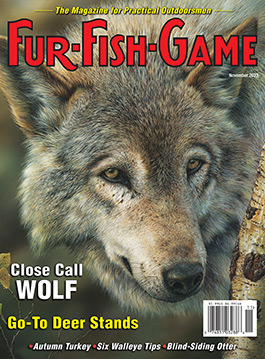
Creating Go-To Deer Stands - Heath R. Curtis tells whitetail hunters how to find and improve deer stands that will produce year after year. Excellent examples are shared for this.
Blind-Siding Otters - Tony A. Dutmers shows otter trappers, especially beginners, how to understand how otters travel waterways and offers tip to catch your first otter.
Fall Turkeys and Their Food - Jason Houser helps turkey hunters find autumn birds by focusing on their food sources, particularly hard mast like acorns, soft mast like grapes, insects and crops.
Rough Shooting Through the Season - Phil Goes and his English cocker spaniel, Junie B, explore “pure hunting,” the sort of game a guy and his dog can find close to home with a basic hunting license.
Drought Deer and Muzzleloaders - Randy D. Smith looks at how drought changed whitetail behaviors and shares some muzzleloader tactics he used to adapt to their behavior.
The Importance of Deer Sign During the Rut – Ryan Fair shares how deer communicate via scrapes, rubs, tracks and scat and helps hunters decipher what sign can help them tag good bucks.
Other stories include:
• Close Call Wolf Trapping - Lucas Byker tells a harrowing tale of a close encounter with a wolf on his Alaska trapline.
• Perception: The Ultimate Camo? – Josh Isabel asks hunters to consider how they approach game as the best form of camouflage.
• New Mexico Quail – Martin Frenzel explores the Land of Enchantment’s four quail species and hunting them.
• Little League Trapping – Joel Hoffer introduces two 5-year-olds to trapping. This turns into a learning experience for both Hoffer and the kids.
• Six Tips for November Walleyes - Jordan McDowell offers six tips for catching autumn walleyes.
End of the Line Photo of the Month
Nicky "Ratman" Leropoli, Lisbon, Ohio
SUBSCRIBE TO FUR-FISH-GAME Magazine

